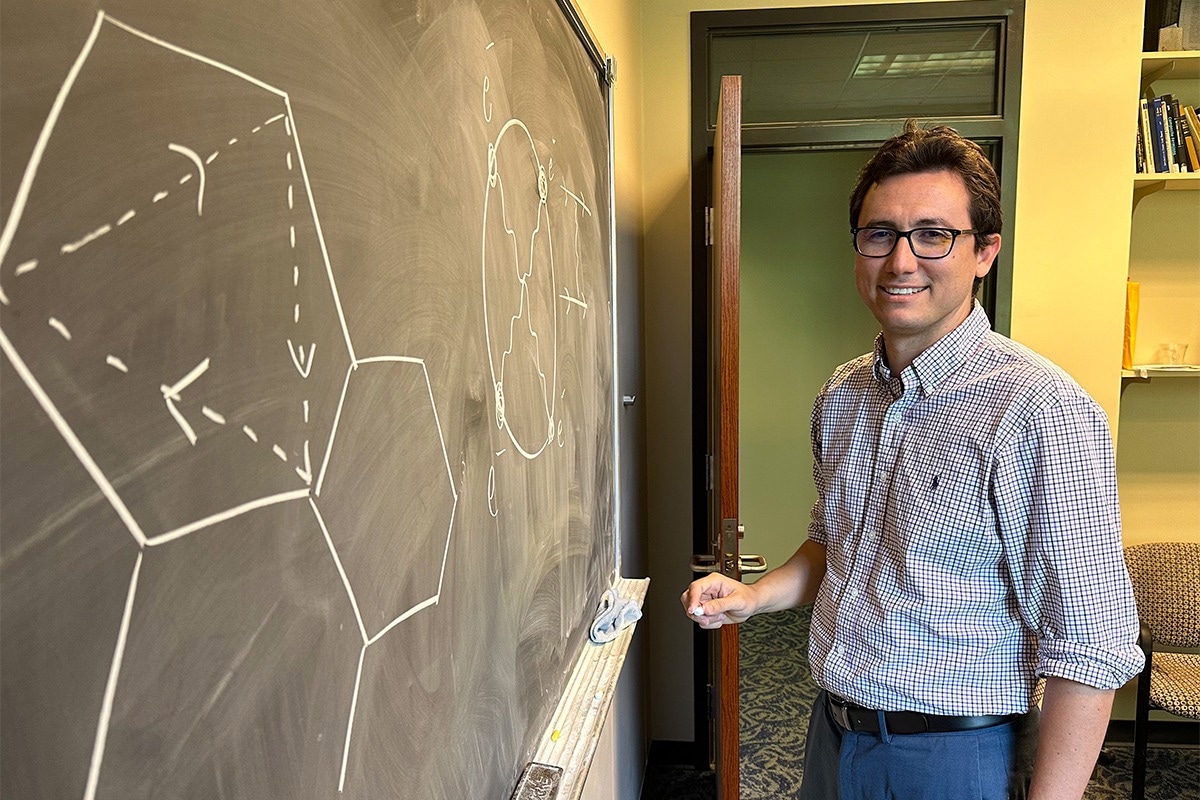A new mechanism for the formation of oscillating superconductivity, called pair-density waves, has been determined by physicists.

“Everything we learn about the world has potential applications,” says Emory physicist Luiz Santos, senior author of the paper. Image Credit: Emory University
Physical Review Letters reported the breakthrough, which offers new knowledge into an unconventional and high-temperature superconductive state observed in some materials, such as high-temperature superconductors.
We discovered that structures known as Van Hove singularities can produce modulating, oscillating states of superconductivity. Our work provides a new theoretical framework for understanding the emergence of this behavior, a phenomenon that is not well understood.
Luiz Santos, Study Senior Author and Assistant Professor of Physics, Emory University
The study’s first author is Pedro Castro, an Emory physics graduate student. The co-authors include Daniel Shaffer, a postdoctoral fellow in the Santos group, and Yi-Ming Wu from Stanford University.
The study was financially supported by the US Department of Energy’s Office of Basic Energy Sciences.
The Puzzle of Superconductivity
Santos is a theorist who specializes in condensed matter physics. Santos studies the interactions of quantum materials—tiny things like photons, atoms, and electrons—that fails to act as per the laws of classical physics.
Superconductivity, or the potential of some materials to conduct electricity in the absence of energy loss when cooled to a super-low temperature, is one example of interesting quantum behavior.
In 1911, the phenomenon was found when Dutch physicist Heike Kamerlingh Onnes displayed that mercury lost its electrical resistance when being subjected to cooling to 4 K or −371 °F. This is the temperature of Uranus, the coldest planet present in the solar system.
It took researchers until 1957 to develop an explanation for how and why superconductivity takes place. At ambient temperatures, electrons roam more or less separately.
They run into other particles, leading them to shift speed and direction and dissipate energy. But at low temperatures, electrons have the potential to arrange into a new state of matter.
They form pairs that are bound together into a collective state that behaves like a single entity. You can think of them like soldiers in an army. If they are moving in isolation they are easier to deflect. But when they are marching together in lockstep it’s much harder to destabilize them. This collective state carries current in a robust way.
Luiz Santos, Study Senior Author and Assistant Professor of Physics, Emory University
A Holy Grail of Physics
Superconductivity carries huge potential. In theory, it could enable electric current to move via wires without losing energy or heating them. Further, such wires could carry more electricity in a very efficient way.
One of the holy grails of physics is room-temperature superconductivity that is practical enough for everyday-living applications. That breakthrough could change the shape of civilization.
Luiz Santos, Study Senior Author and Assistant Professor of Physics, Emory University
Several engineers and physicists are working on this frontline to transform how electricity gets converted.
At the same time, superconductivity has earlier discovered applications. Superconducting coils power electromagnets that are utilized in magnetic resonance imaging (MRI) machines for medical diagnostics.
A small amount of magnetic levitation trains are currently operating worldwide, built on superconducting magnets that are nearly 10 times stronger compared to ordinary electromagnets. The magnets repel each other when the matching poles face each other, thereby producing a magnetic field with the ability of levitating and propelling a train.
The Large Hadron Collider, a particle accelerator that researchers are utilizing to research the basic structure of the universe, is one more instance of technology that runs via superconductivity.
Superconductivity remains to be discovered in more materials, such as those that are superconductive at higher temperatures.
An Accidental Discovery
One focal point of Santos’ research is how interactions happening between electrons could result in forming superconductivity that could not be described by the 1957 description of superconductivity. An instance of this alleged exotic phenomenon is oscillating superconductivity, when the paired electrons dance in waves, altering amplitude.
In an irrelevant project, Santos asked Castro to examine particular properties of Van Hove singularities, structures where several electronic states turn out to be close in energy. Castro’s project disclosed that the singularities seem to have the proper type of physics to seed oscillating superconductivity.
That triggered Santos and his collaborators to delve into depth. They disclosed a mechanism that would enable such dancing-wave states of superconductivity to emerge from Van Hove singularities.
Santos stated, “As theoretical physicists, we want to be able to predict and classify behavior to understand how nature works. Then we can start to ask questions with technological relevance.”
Few high-temperature superconductors—which function at temperatures around three times as cold as a household freezer—have this dancing-wave behavior. The breakthrough of how this behavior could emerge from Van Hove singularities offers a foundation for experimentalists to investigate its possibilities.
Santos stated, “I doubt that Kamerlingh Onnes was thinking about levitation or particle accelerators when he discovered superconductivity. But everything we learn about the world has potential applications.”
Journal Reference
Castro, P., et al. (2023) Emergence of the Chern Supermetal and Pair-Density Wave through Higher-Order Van Hove Singularities in the Haldane-Hubbard Model. Physical Review Letters. doi.org/10.1103/PhysRevLett.131.026601.